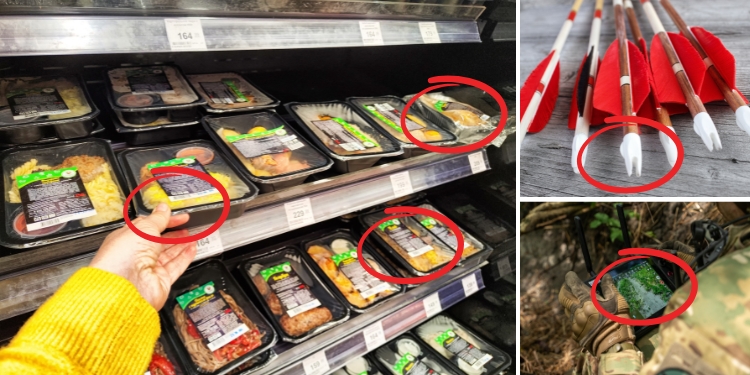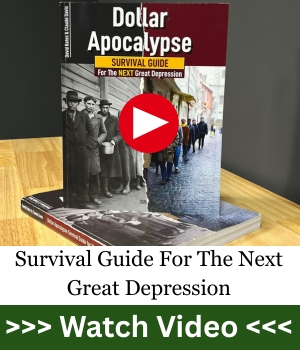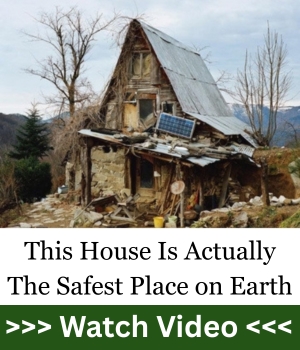Not every viral video or Reddit thread offers good advice—especially when it comes to prepping. In fact, some of the trends that look impressive online could actually do more harm than good when things go south. If your goal is to survive, not go viral, then it’s time to get serious about what not to follow.
Here are 15 prepping trends that could get you hurt—or worse.
Relying on MREs as Your Entire Food Plan
MREs (Meals Ready to Eat) are popular because they’re compact, calorie-dense, and easy to store. But they were never intended for long-term use. The high sodium content, low fiber, and processed nature of MREs can lead to constipation, dehydration, and nutrient deficiencies if consumed over extended periods.
 Real Solution: Round out your food supply with dry staples like rice, beans, pasta, and oats. Supplement with canned meats, freeze-dried fruits and vegetables, and home-canned goods. A varied diet not only provides better nutrition but also prevents food fatigue and digestive issues.
Real Solution: Round out your food supply with dry staples like rice, beans, pasta, and oats. Supplement with canned meats, freeze-dried fruits and vegetables, and home-canned goods. A varied diet not only provides better nutrition but also prevents food fatigue and digestive issues.
I chose to guide my prepping in the food area based on Joel Lambert’s recommendations in A Navy SEAL’s Bug-In Guide, where you’ll find all the information you need to prepare a complete and smart stockpile that can last up to three months without any issues.
I also bought another book to help me make the most of all the ingredients I keep in my SHTF pantry. It’s a book with over 125 long-lasting food recipes.
The Lost SuperFoods contains many simple recipes based on easily stored ingredients, keeping you well-fed during crisis situations. Here’s an example of ingredients for a bean and rice survival soup:
- 2/3 cup kidney beans
- 2 cups barley
- 1 cup lentils
- 1/4 cup green split peas
- 1/4 cup chickpeas
- 1 1/2 cups rice
- Bouillon (chicken, beef, or vegetable)
- *Seasonings of your choice
If you want the full recipe for a small batch, plus an alternative for a large batch, as well as over 125 other recipes proven effective in crisis situations, click here!
Bugging Out Without a Real Plan
The idea of bugging out has been romanticized on TikTok and YouTube, but the reality is grim if you don’t have a concrete plan. Leaving without a destination, map, bug out bag, or logistics in place often leads to aimless wandering and increased risk.
Fix This: Pre-select a bug-out location. This could be a friend’s rural property, a cabin, or even a secondary home base. Create multiple evacuation routes and physically practice getting there under different scenarios (day/night, low fuel, road closures). Factor in your family’s needs, terrain challenges, and what you’ll carry on foot if needed.
Don’t get this twisted, though. Because you might need to bug out without a pre-planned strategy. In these survival situations, you need to learn as much as possible about foraging (important knowledge here), as well as other crucial aspects for your life. I’m talking about:
- How to build a shelter in the woods
- How to find water
- How to purify water
- How to start a fire
- How to protect yourself from attackers
All of this, plus many other wilderness survival tips, is analyzed in detail in The Wilderness Long-Term Survival Guide.
Unsafe Fuel Storage
Stockpiling fuel improperly is one of the most dangerous mistakes preppers make. TikTok videos showing large collections of gas cans in sheds with no ventilation are fire hazards waiting to ignite.
Safer Method: Use only approved fuel containers. Store fuel in a shaded, well-ventilated area away from ignition sources. Rotate your supply every few months and use stabilizers like STA-BIL for gasoline and diesel to prolong shelf life.
DIY Weapons for Looks
Social media is flooded with homemade spears, slingshots, and fantasy-style blades. But in a real conflict or survival situation, reliability matters more than aesthetics. The Rambo knife will not cut it.
Better Idea: Choose proven tools like quality fixed-blade knives, compact axes, or firearms (if legal and trained). Focus on practical self-defense training instead of crafting weapons that look cool but may fail you when it matters most.
Going Tactical in Public
 Dressing head-to-toe in tactical gear might get you views online, but in a real-world emergency, it can make you look like a threat. You’ll draw attention from authorities, looters, and frightened citizens.
Dressing head-to-toe in tactical gear might get you views online, but in a real-world emergency, it can make you look like a threat. You’ll draw attention from authorities, looters, and frightened citizens.
Alternative: Master the “gray man” approach. Wear neutral clothing, avoid flashy gear, and blend in with your environment. The less attention you draw, the safer you’ll be.
Exposing Stored Food to Sunlight
Some influencers proudly display their food preps for likes, leaving shelves of canned goods or sealed buckets out in garages, attics, or bright rooms. UV rays and heat destroy food quality.
Smart Storage: Keep food in dark, cool, and dry areas. Use bins or covers to shield items from light. Label everything with dates and rotate stock regularly. Food is only useful if it’s edible when you need it.
Falling for Cheap Solar Tech
A tiny solar panel might charge a phone once or twice—but won’t help you cook, refrigerate, or light your home for long.
Smarter Setup: Invest in a reliable off-grid solar system. Learn about wattage needs, battery storage (like deep-cycle AGM or lithium batteries), and charge controllers. A modest but well-planned setup is better than a pile of underperforming gadgets.
Depending Too Much on Tech
People love to show off bug-out bag apps, GPS gear, or portable weather stations. But tech is fragile, especially in an EMP event or prolonged power outage.
Back to Basics: Always carry analog backups—printed maps, field manuals, paper copies of ID and contacts, and compass navigation skills. Tech should enhance your preps, not be the foundation.
Oversized Bug-Out Vehicles
Turning an old school bus into an armored doomsday ride might look great on social media, but these vehicles are slow, wide, and gas-guzzling.
Smarter Vehicle Choice: Go with something practical: a mid-size SUV or all-wheel-drive truck with decent MPG. It should be quiet, low-profile, and capable of handling rough terrain without attracting attention.
Misusing Vacuum Sealing
Vacuum sealing is amazing—when used right. Sealing fresh fruits, bread, or moist foods without proper prep can lead to mold and bacteria.
Get It Right: Use oxygen absorbers with dry goods and freeze items before sealing when needed. Label and date everything, and rotate regularly. Sealing gear is great, but only with knowledge.
Hoarding Gear Without Skills
Videos of massive gear walls and $10,000 stockpiles are common. But without training, it’s just clutter. Fancy tools don’t replace basic knowledge.
Fix It: Practice regularly—go camping, cook over fire, collect water, purify it, and run realistic drills. The best gear is worthless if you can’t use it under pressure.
You can learn a lot from those trained to survive in harsh conditions, making the most out of relatively simple tools.
U.S. Army troops on tough, arid fronts around the world have to rely on off-grid solutions, even when it comes to collecting and purifying water.
Military experts came up with an innovative solution called The Smart Water Box.
Easy to assemble quickly, portable, and requiring nothing but air, this system provides considerable amounts of water, keeping soldiers hydrated anywhere.
I felt immense joy when I discovered that I could find here the exact blueprint that allowed me to set up this smart system at home as well.
Glamorizing SHTF Scenarios
It’s tempting to think the collapse of society will be a fresh start, but the truth is ugly. Death, despair, and desperation are more likely than glory.
Stay Grounded: Prepping isn’t about winning the apocalypse. It’s about keeping your loved ones safe and fed. Focus on sustainability, mental preparedness, and building a supportive network.
Neglecting Mental Health
Fear-based prepping often leads to obsession, isolation, and depression. TikTok algorithms feed doomscrolling which can worsen anxiety.
Protect Your Mind: Prep from a place of peace. Get outside. Build hobbies and defeat procrastination. Connect with family and other like-minded people. A strong mindset could be your most valuable tool.
Buying Gear You Can’t Afford
There’s a trend of expensive gadgets and high-end brands—like $500 bug-out bags or custom knives. Going into debt for preps leaves you vulnerable in real life.
Be Strategic: Use thrift stores, build slowly, and focus on versatility. A $20 tarp and a bit of knowledge can outperform a $300 tent if used right. In The Amish Ways Book you can see how the Amish manage to save money. Their entire mindset is built around being efficient and avoiding any type of waste.
Treating Prepping Like a Phase
Many newcomers binge prep for a few months, then quit. When SHTF, gear that’s outdated or expired won’t help.
Long-Term Approach: Make prepping a lifestyle. Revisit your plans quarterly. Update your gear and restock your food. Stay curious, read, and practice. The world changes—so should your preps.
Final Thought
Prepping is serious business. It’s not about looking tough online or mimicking every flashy trend. It’s about staying alive, staying aware, and being adaptable. If you’ve been swept up in the viral side of prepping, take a step back. Evaluate your priorities. Be honest about your skills and resources.
Survival favors the prepared—not the performative.
Freedom is the most important value for a prepper. And the best form of freedom you can have is freedom from the grid. Producing your own electricity, food, or water is a true blessing. With the help of The Water Freedom System, you can independently solve your clean water needs—affordable and safe!
You may also like:
Deinfluencing You: 10 Long-Lasting Foods You Should Stop Stockpiling
This Underground Bunker Helps You Build An EMP-Proof Shelter (Fast, Safe, Affordable) (Video)
Why Everyone Is Abandoning Prepping
These 20 States Will Go Dark This Summer. Do You Live in One of Them?

























Real Answer Is : Complacency , Slothfulness
As the bible states : Proverbs The Ant and The Sluggard
Work Each Day as though it was for tommorrow and if it was your last day
Steady , Smart and dilligently
Always Faithful
Always Loyal
And Defininitly Trusting in God , Thru Jesus Christ the Ransom for us all
Paid by the Cross of Calvary
All who trust, believe, follow his word the bible
Yeah… Complacency and laziness can be just as deadly as any bad prepping trend. Too many people think they’ll just “wing it” when the time comes, but survival requires daily effort and discipline, not just wishful thinking.
Howdy from high in the desert swamp,
I don’t have much choice with bug in or bug out. My age and state of health tell me bug in. Unless my place is pretty much destroyed I’m staying put. If my vehicle is drivable I’m just going to load up and go to a place I know in the swamp. Any direction I go I have to cross many rivers and high arch bridges. Back roads have bridges over bayous. If it’s like it usually is in an emergency the roads are clogged, and there will be at least one semi that has broken down or blown tires right by the artery. I can get close to where I want to go in just a few minutes. If traffic is bad, I can actually make it there pushing a wheelbarrow. Having that loaded and my big pack on my back will be a burden for sure, but I can make it. Depending on the event and if people are wandering back in the woods, I can probably stay at my spot for about two weeks before I would try to make it back to my wrecked house. All these scenarios are great to run through. Knowing what Knowing what is like trying to get out of here when everybody else is too? I see myself setting my tent up in the yard. Begin going through debris and salvaging. Hoping I can find useful items. Hoping my neighbor is good. Hoping looters are somewhere else. Trying to live secure as possible. Give it a few days and if vehicles are able to start take a drive and scout the area. I’m deaf. I can’t listen to emergency broadcasts. Assuming cell towers don’t work. If I see roads blocked? Turn back. Settle in salvaging and moving debris. I sat in the yard the other day while smoking bacon. I thought about what I would need to remove studs or rafters and build a shelter. I went through my hand tools and have what I need to do it. This article made me think again about BIBO? Again answer to self is bug in if it’s not a fire. After several scenario runs recently because it somewhat happened has been a good learning/remembering time. Recently a young man running out of gas and blocking a lane caused anger in motorists I wasn’t expecting. The ungrateful young man made me angry. Having to evacuate from a hurricane was a slap in the face wake up. Being stuck away from home and all I had was my hiking pack was a hmmm moment. No matter what, it will be tough. Set your mind to that. If it’s not then be thankful. If it is or worse, you were somewhat prepared or.. not…
Remember the Alamo
Remember 9/11
Remember North Carolina
Remember to have your soul prepared
Hi Chaplain Dan…I was wondering if you ever thought about investing in a good quality inflatable raft ? Sounds like you have alot of swamp to explore .I did a deep dive into a good quality inflatable raft back in my meteor hunting days….which actually will make you a expert at bugging out , because first man at the debris field win’s…..which could be any where at any time….Note it’s hard to compete with the scientists but can be done .
That was one of the most real-world scenario breakdowns I’ve read in a while. Age, health, terrain, traffic, and even something as small as a stalled car can completely change the plan—your story shows that perfectly.
I think a lot of preppers forget that “bugging out” is usually not the Hollywood version of disappearing into the woods—it’s a nightmare of clogged roads, broken bridges, and unexpected human behavior.
Your approach of testing scenarios, salvaging, and mentally preparing for hardship is exactly what most people don’t do until it’s too late. You hit the nail on the head with “set your mind to that”—SHTF will always be harder than it looks in our plans.
Makes me think. Chap Dan, will be fine as long as we still have oxygen. If he doesn’t have it, he will do without or make some of it, from scratch.
They do sell cabin tents, with chimney pass thru’s. Add a layer of bows and anything that looks like insulation, its portable, efficient, comfortable and quick !
back to Dan, this is every ones chance to think. how big of a SHTF are you ready for ?
no radio ? but, if he has internet, he can read information. How about you ? what if all AM/FM are of Air, maybe by EMP ? where are YOU if an EMP takes out what YOU rely on ?
THEY are not prepped, = you dont have internet, or AM or FM or electric grid, CLOGGED roads, no gas stations, and a lot more.
Howdy again,
I am under no delusions. Thinking it, planning or preparing is far different from doing. I’m walking to build stamina. I got disgusted with doctors during c19 and worked my way off all medications. I have built things in the past. I did build a shelter in the woods last winter. It took longer than I figured. It worked but I was tired. Maybe in a group setting one skill to offer is know how. I show you, you do it, type thing. I have several useful skills. I hope I leave my family a lot of preparedness options. They don’t scoff at me but are rarely helpful. My wife got somewhat on board during hurricane Harvey. We could go nowhere for 6 days. I showed her what I had and how to use some of it. Since then she doesn’t frown at me. It’s best if you can get your immediates involved but don’t count on it.
Do what you can. I do what I can and the rest is shrug.
You bring up a tough but important reality—most people rely way too much on power, internet, and the grid without realizing how fragile it all is. An EMP or even just a prolonged blackout would throw society into chaos overnight.
Learning prepping skills is a valuable tool to have in your tool belt of life…..
That mindset right there is what separates survivors from victims.